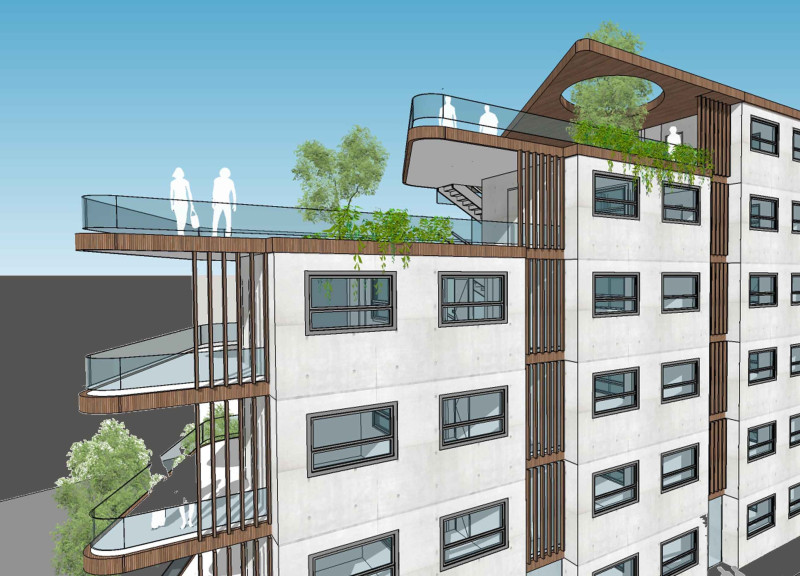5 key facts about this project
The design focuses on creating a community-oriented living space in San Francisco, addressing pressing housing needs within the city. The aim is to offer affordable housing options while encouraging social connections among residents. The concept, "Live Together Apart," highlights a balance between personal living areas and shared communal spaces, catering to a diverse range of people, including young professionals, families, and seniors.
Flexible Living Arrangements
Living spaces are organized as co-living units that provide single-room occupancy within shared buildings. Each unit is equipped with communal amenities such as kitchens, living rooms, and laundry facilities. This setup allows residents to interact while still enjoying their privacy. The approach directly responds to the demand for affordable housing and supports a lifestyle that promotes community engagement.
Adaptability and Sustainability
Adaptability is a key feature. Spaces are designed to change with the needs of residents over time. These units can accommodate home offices and provide acoustically separated areas that fit modern living requirements. Sustainability is also important in the design, achieved through the use of green roofs that help manage stormwater runoff, encourage biodiversity, and offer shared recreational spaces for residents.
Material Utilization and Construction Methods
The design makes use of pre-fabricated construction techniques, which streamline the building process and minimize waste. Structural concrete insulated panels are used for all residential units, ensuring thermal efficiency and providing strong performance, especially in seismic areas. Cross laminated timber is chosen for amenity spaces, recognized for its energy efficiency and solid structural capacity.
Shared outdoor areas, including community gardens and recreational zones, contribute to a pleasant living environment. These spaces enhance both the community aspect and the urban surroundings, promoting a sense of harmony within city life.






















































